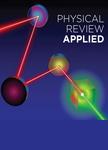版权所有:内蒙古大学图书馆 技术提供:维普资讯• 智图
内蒙古自治区呼和浩特市赛罕区大学西街235号 邮编: 010021

作者机构:Department of Mechanical and Aerospace Engineering Princeton University Princeton New Jersey 08544 USA Program in Applied and Computational Mathematics and Andlinger Center for Energy and the Environment Princeton University Princeton New Jersey 08544 USA
出 版 物:《Physical Review Applied》 (Phys. Rev. Appl.)
年 卷 期:2016年第5卷第6期
页 面:064021-064021页
核心收录:
基 金:Office of Naval Research ONR
主 题:Elastic deformation Elastic modulus First-principles calculations Specific heat Thermal expansion Alloys
摘 要:Magnesium-aluminum (Mg-Al) alloys are important metal alloys with a wide range of engineering applications. We investigate the elastic and thermodynamic properties of Mg, Al, and four stoichiometric Mg-Al compounds including Mg17Al12, Mg13Al14, and Mg23Al30, and MgAl2 with orbital-free density-functional theory (OFDFT). We first calculate the lattice constants, zero-temperature formation energy, and independent elastic constants of these six materials and compare the results to those computed via Kohn-Sham DFT (KSDFT) benchmarks. We obtain excellent agreement between these two methods. Our calculated elastic constants of hexagonal close-packed Mg and face-centered-cubic Al are also consistent with available experimental data. We next compute their phonon spectra using the force constants extracted from the very fast OFDFT calculations, because such calculations are computationally challenging using KSDFT. This is especially the case for the Mg23Al30 compound, whose 3×3×3 supercell consists of 1431 atoms. We finally employ the quasiharmonic approximation to investigate temperature-dependent thermodynamic properties, including formation energies, heat capacities, and thermal expansion of the four Mg-Al intermetallic compounds. The calculated heat capacity and thermal expansion of both Mg and Al agree well with experimental data. We additionally find that Mg13Al14 and MgAl2 are both unstable, consistent with their absence from the equilibrium Mg-Al phase diagram. Our work demonstrates that OFDFT is an efficient and accurate quantum-mechanical computational tool for predicting elastic and thermodynamic properties of complicated Mg-Al alloys and also should be applicable to many other engineering alloys.